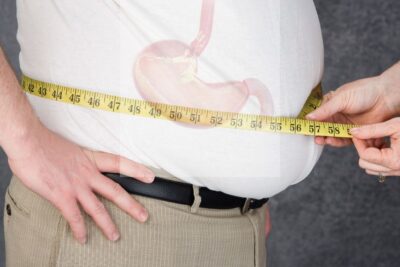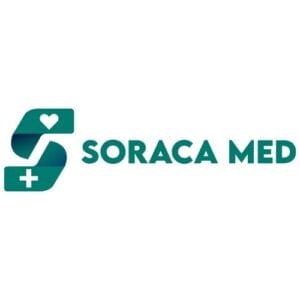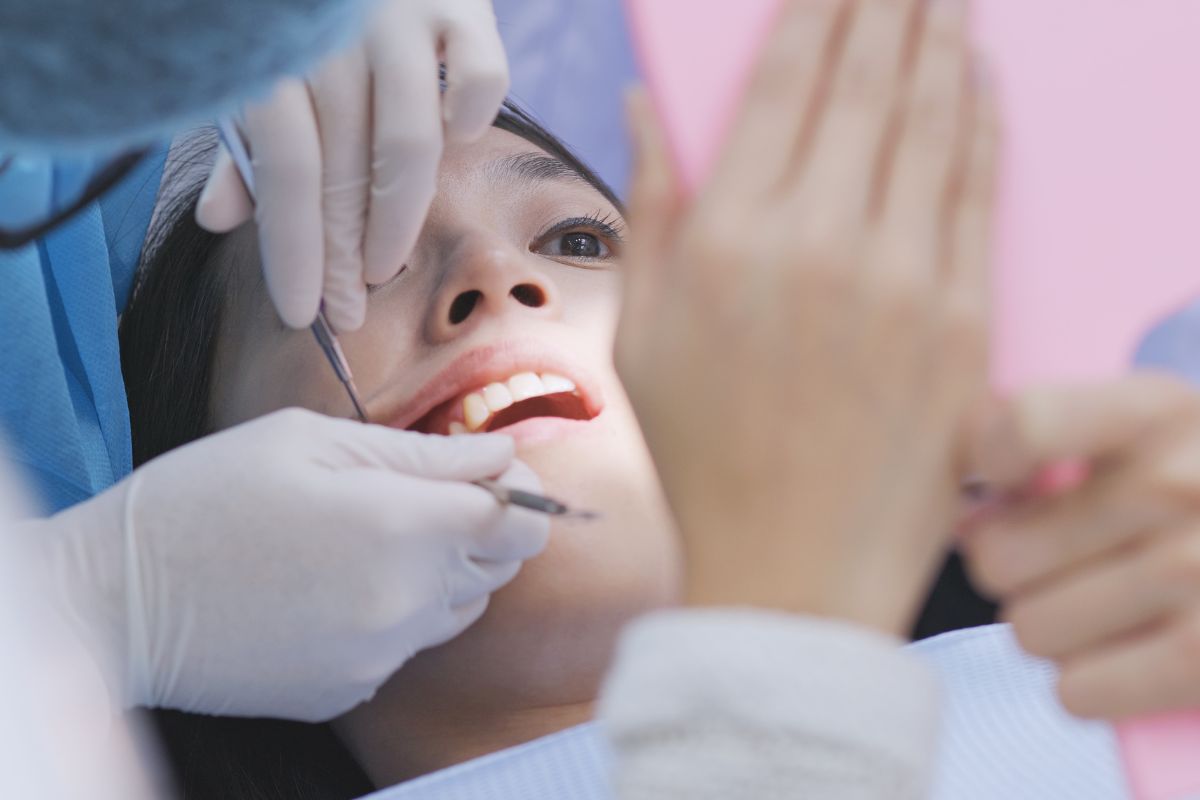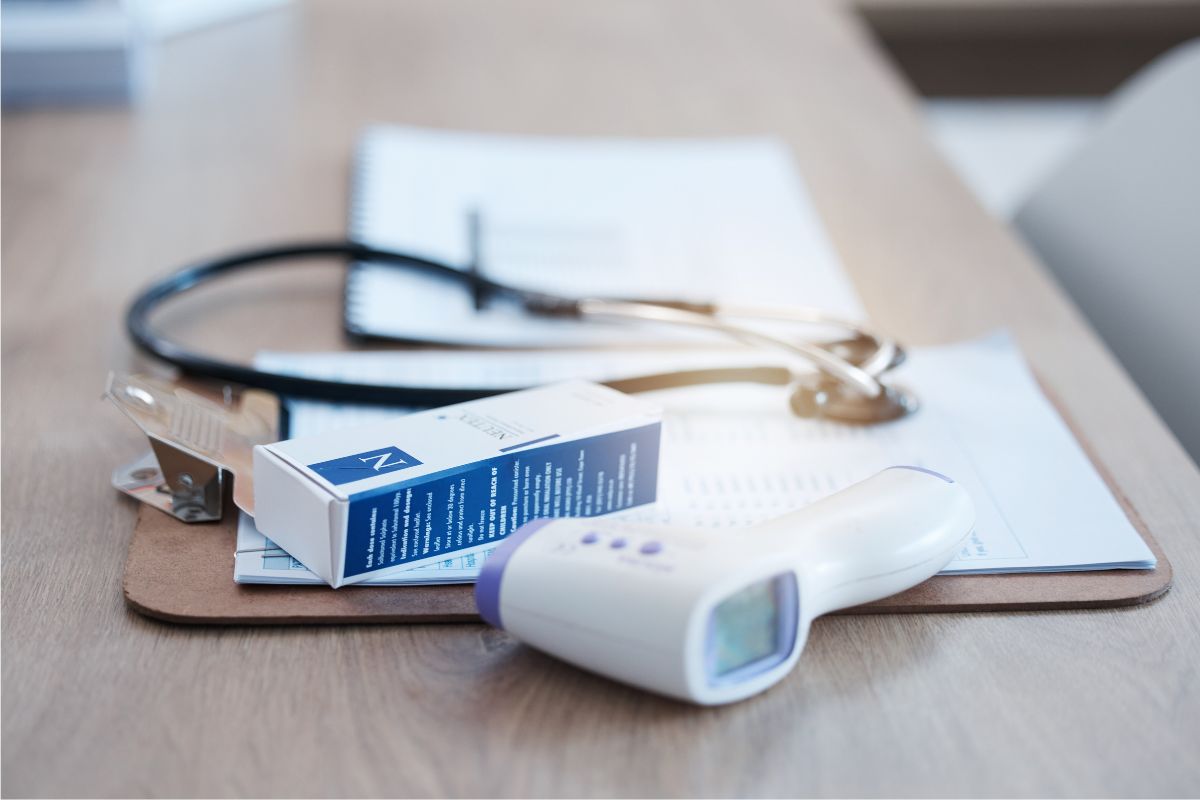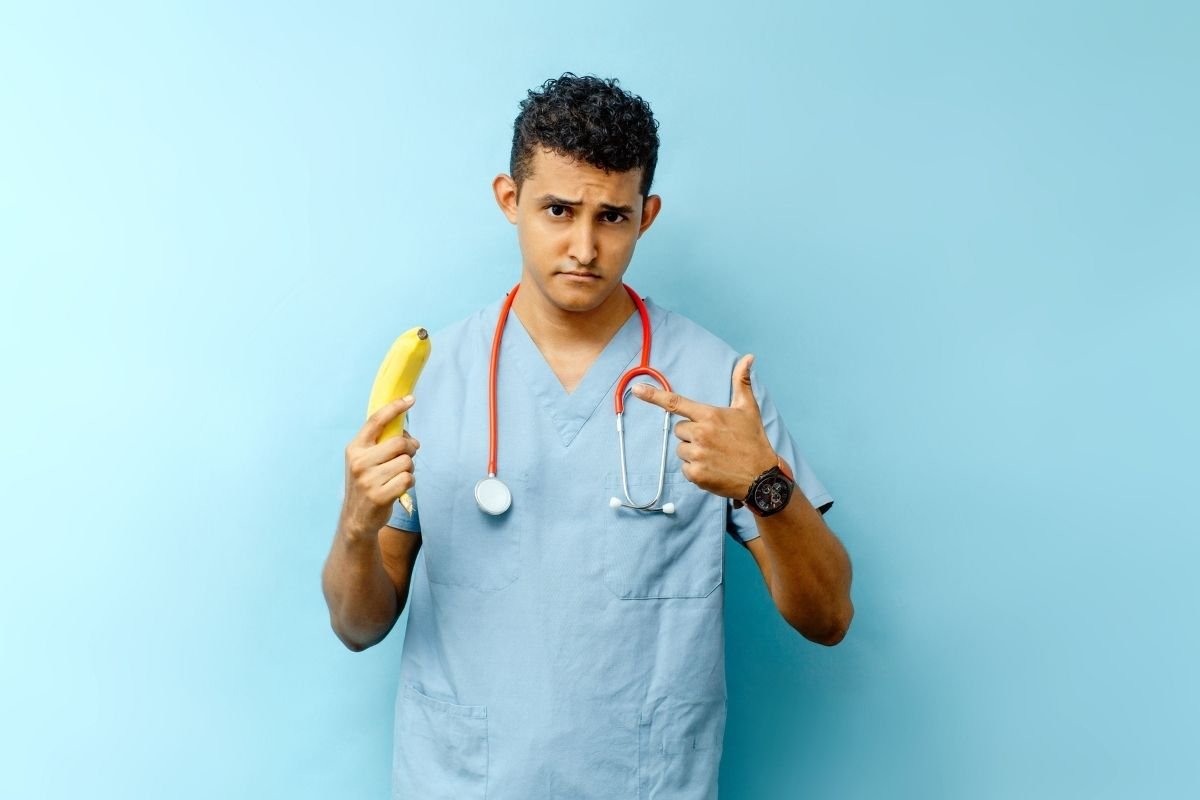What Is Gastic Baloon?
Gastric balloon surgery is a minimally invasive surgical procedure used for obesity and weight loss. During this surgery, a balloon is placed inside the stomach.
Gastric balloon surgery involves the following steps:
Endoscopic Method: Gastric balloon surgery is typically performed using an endoscopic method. This means that the surgery can be carried out without open surgery. An endoscope is inserted through the mouth into the stomach.
Placement of the Balloon: The balloon is inserted into the stomach through the endoscope, filling the stomach cavity. The balloon is usually filled with saline (saltwater) or air, reducing the available space in the stomach and providing a sense of fullness.
Shaping and Securing the Balloon: After the balloon is placed in the stomach, it is shaped and secured with a device outside the balloon, using a catheter. This ensures that the balloon stays in place within the stomach.
Gastric balloon surgery is a temporary method used to promote weight loss in the management of obesity. By occupying space in the stomach, the balloon restricts food intake, resulting in the individual eating less. This helps in reducing calorie intake and supporting weight loss.
Gastric balloon surgery is used as a tool to support diet and lifestyle changes and sustain weight loss. Typically, the balloon remains in the stomach for a period of 6 to 12 months and is regularly monitored by a dietitian or obesity specialist during this time.
Gastric balloon surgery is a temporary solution used to support weight loss and improve health. Prior to and following the surgery, it is important to undergo a detailed evaluation with a healthcare professional and have a thorough discussion about the benefits, risks, and expected outcomes of the procedure.
Gastric Baloon Types
Gastric balloons are medical devices that are temporarily inserted into the stomach to assist with weight loss. There are several types of gastric balloons available, each with its own characteristics. Here are some common types of gastric balloons:
Intragastric Balloon (IGB): This is the most commonly used type of gastric balloon. It is a soft, silicone balloon that is placed into the stomach through an endoscopic procedure. Once in place, it is filled with a sterile saline solution or air to occupy space in the stomach and create a feeling of fullness. Intragastric balloons are typically left in the stomach for a period of six months
Single Balloon: This type of gastric balloon consists of a single balloon filled with a liquid or gas. It is designed to occupy space in the stomach and reduce hunger by creating a sense of fullness.
Dual Balloon: Dual balloons are composed of two connected balloons filled with saline solution or gas. The idea behind the dual balloon design is to enhance the efficacy of weight loss by increasing the volume of the balloon and prolonging the duration of its effectiveness.
Adjustable Balloon: Adjustable gastric balloons have a mechanism that allows for adjustment of the balloon’s volume. This feature enables healthcare providers to optimize the balloon’s effect on satiety and weight loss by adjusting its size during follow-up visits.
It’s important to note that the availability of specific types of gastric balloons may vary depending on the country and healthcare provider. The selection of the most suitable type of gastric balloon depends on various factors, including the patient’s individual needs, medical history, and the recommendation of the healthcare provider.
It’s recommended to consult with a qualified healthcare professional who can provide detailed information about the available gastric balloon options and help determine the most appropriate choice for your specific circumstances.
How is the Gastric Balloon Placed?
The placement of a gastric balloon typically involves the following steps:
Pre-procedure preparation: Prior to the placement of a gastric balloon, you will have a consultation with your healthcare provider to discuss the procedure, review your medical history, and address any concerns or questions you may have. You may also undergo certain pre-operative tests, such as blood work and imaging studies.
Anesthesia: Gastric balloon placement is typically performed under sedation or general anesthesia to ensure your comfort during the procedure. The specific type of anesthesia used will be determined by your healthcare provider.
Endoscopy: The placement of a gastric balloon is generally done using an endoscopic procedure. An endoscope, which is a flexible tube with a camera and light at the end, is inserted through your mouth and into your stomach. This allows the healthcare provider to visualize the stomach and perform the placement.
Balloon insertion: Once the endoscope is positioned in the stomach, the deflated gastric balloon is guided through the endoscope and into the stomach. The balloon is made of a soft, silicone material and is folded or rolled up for insertion. It is then filled with a sterile saline solution or air to expand and occupy space in the stomach.
Balloon adjustment and positioning: The healthcare provider will carefully position the balloon within the stomach, ensuring it is not obstructing the passage of food through the digestive system. In the case of adjustable balloons, the volume of the balloon may be adjusted at this stage to optimize its effect on satiety and weight loss.
Balloon inflation verification: Once the balloon is in place, the healthcare provider will confirm its correct positioning and inflation status using the endoscope. This may involve filling the balloon with a specific volume of liquid or air and assessing its position within the stomach.
Completion and recovery: After the gastric balloon is successfully placed, the endoscope is removed, and you will be taken to a recovery area. The recovery time can vary, but in most cases, patients are observed for a few hours before being discharged home on the same day.
It’s important to follow your healthcare provider’s post-procedure guidelines, including dietary instructions and scheduled follow-up visits, to ensure the effectiveness and safety of the gastric balloon. These instructions may include a specific diet plan during the initial weeks after placement and guidance on managing potential side effects or complications.
Please note that the specific details of the gastric balloon placement procedure may vary depending on the type of balloon used and the practices of the healthcare provider. It’s best to consult with your healthcare provider for accurate and detailed information specific to your situation.
Gastic Baloon What to Expect?
Gastric balloon surgery is an effective option for promoting weight loss and assisting in the weight loss process for suitable candidates. However, expectations can vary from person to person, and the postoperative results can be different for each individual. Here are some common expectations:
Weight Loss: Gastric balloon surgery is a method used to support weight loss. It is generally expected that individuals will lose weight during the period when the balloon is in place. However, the amount of weight loss can vary depending on the person’s initial weight, adherence to lifestyle changes, and other factors.
Feeling of Fullness: The balloon fills the space in the stomach, creating a feeling of fullness. This can help individuals eat less and consume fewer calories. Changes in eating habits, such as consuming smaller portions and feeling satisfied, are expected.
Diet and Lifestyle Changes: Gastric balloon surgery is used as a tool to support diet and lifestyle changes. Therefore, it is important to adapt to a healthy diet program and engage in regular physical activity after surgery. These changes are necessary to sustain weight loss and improve health.
Temporary Solution: Gastric balloon surgery is typically a temporary method. The balloon remains in the stomach for a period of 6 to 12 months, supporting weight loss during that time. However, the balloon may need to be removed or replaced. Therefore, it is important to consider other methods and lifestyle changes for long-term weight loss strategies.
Since each individual has a different body structure, metabolism, and lifestyle, postoperative expectations and results will be unique to the individual. Prior to and following gastric balloon surgery, it is important to undergo a detailed evaluation with a healthcare professional to discuss expectations and potential outcomes of the surgery.
How Many Way For Gastric Balloon Placement?
There are typically two main methods for placing a gastric balloon: endoscopy and swallowable capsules. Let’s discuss each method:
Endoscopic Placement: This is the most common and widely used method for gastric balloon placement. It involves the use of an endoscope, which is a flexible tube with a camera and light, to guide the deflated balloon into the stomach through the esophagus. Once the balloon is in position, it is inflated with a sterile saline solution or air. The entire procedure is performed under sedation or general anesthesia, and the balloon remains in the stomach for a specific period, usually around six months. At the end of the treatment period, the balloon is deflated and removed using the endoscope.
Swallowable Capsule Placement: A newer method for gastric balloon placement involves the use of a swallowable capsule. In this approach, the deflated balloon is enclosed within a small capsule or pill. The patient swallows the capsule, which then travels down the esophagus and into the stomach. Once the capsule reaches the stomach, it dissolves, and the balloon expands with a sterile saline solution or gas. The inflated balloon remains in the stomach, occupying space and creating a feeling of fullness. After the treatment period, the balloon is deflated and passes out of the body naturally through bowel movements.
It’s important to note that the availability of different placement methods may vary depending on your location and the specific gastric balloon used. The choice of placement method is typically determined by your healthcare provider based on various factors, including your medical history, individual needs, and the available options.
During the consultation with your healthcare provider, they will discuss the available placement methods, explain the pros and cons of each approach, and recommend the most suitable option for you.
It’s important to consult with a qualified healthcare professional who can provide accurate information specific to your situation and guide you through the gastric balloon placement process.
How Is the Gastric Balloon Removed?
The removal of a gastric balloon typically involves a similar process to its placement. Here is an overview of how a gastric balloon is typically removed:
Pre-removal consultation: Prior to the removal of the gastric balloon, you will have a consultation with your healthcare provider. During this consultation, you will discuss the removal procedure, any necessary preparations, and address any questions or concerns you may have.
Removal under endoscopy: In most cases, the removal of a gastric balloon is performed using an endoscopic procedure. An endoscope, a flexible tube with a camera and light, is inserted through your mouth and into your stomach. The endoscope is carefully maneuvered to reach the gastric balloon.
Balloon deflation: Once the endoscope is positioned near the gastric balloon, the healthcare provider will deflate the balloon. This is typically done by removing the saline solution or air that was used to inflate the balloon during the placement procedure. The deflation process may involve piercing the balloon or extracting the fluid through a small tube connected to the balloon.
Balloon retrieval: After deflation, the deflated gastric balloon is grasped and carefully removed from the stomach using the endoscope. The healthcare provider guides the balloon through the esophagus and out of the body.
Completion and recovery: Once the gastric balloon is successfully removed, the endoscope is withdrawn, and you will be taken to a recovery area. Depending on the specific protocol, you may be observed for a brief period before being discharged home on the same day.
It’s important to note that the removal process may vary slightly depending on the specific type of gastric balloon used and the practices of the healthcare provider. In some cases, if a swallowable capsule-type gastric balloon was used, the deflated balloon may pass out of the body naturally through bowel movements, eliminating the need for endoscopic removal.
Your healthcare provider will provide you with specific instructions for the post-removal period, including any dietary considerations or follow-up appointments.
As always, it’s best to consult with your healthcare provider for accurate and detailed information tailored to your individual situation and the specific type of gastric balloon you have.
Is Gastric Balloon Permanent?
The lifespan of a gastric balloon varies depending on the type of balloon used. In general, gastric balloons are designed to be temporary and are typically left in place for a specified period to aid in weight loss. Here are some common durations for different types of gastric balloons:
Intragastric Balloon (IGB): The most commonly used gastric balloon, such as the intragastric balloon, is typically left in place for around six months. During this time, it occupies space in the stomach, creating a feeling of fullness and assisting with portion control.
Adjustable Gastric Balloon: Some gastric balloons are adjustable, meaning that their volume can be modified during follow-up visits. The initial placement may involve a smaller-sized balloon, which can be gradually inflated over time to optimize weight loss and satiety. The overall treatment duration may still be around six months, but the adjustments can be made to enhance the effectiveness during this period.
It’s important to note that the lifespan of a gastric balloon is not indefinite. The balloon is designed to be temporary and must be removed after the specified treatment duration to prevent potential complications or adverse effects. Therefore, it is crucial to follow the recommended treatment timeline and undergo the necessary removal procedure as advised by your healthcare provider.
It’s also worth mentioning that the specific duration and guidelines for a gastric balloon may vary depending on the country, healthcare provider, and the specific type of balloon used. Your healthcare provider will provide you with the appropriate information regarding the expected lifespan and removal process of the specific gastric balloon you receive.
Always consult with a qualified healthcare professional to get accurate and personalized information based on your specific situation and the specific gastric balloon used.
Why Should I Choose The Gastric Baloon?
Choosing a gastric balloon as a weight loss intervention is a personal decision that should be made in consultation with a qualified healthcare professional. Here are some factors to consider when deciding whether a gastric balloon is the right choice for you:
Non-surgical approach: One of the advantages of a gastric balloon is that it is a non-surgical procedure. It does not involve any incisions or alterations to the anatomy of the digestive system, unlike other weight loss surgeries. This may be appealing to individuals who are looking for a less invasive option or those who are not eligible for surgical interventions.
Temporary and reversible: Gastric balloons are temporary devices that are typically left in place for a specific period, usually around six months. If you’re uncertain about committing to a permanent surgical procedure, a gastric balloon allows you to try a non-permanent solution for weight loss. Additionally, if you’re not satisfied with the results or experience any adverse effects, the balloon can be removed.
Weight loss assistance: Gastric balloons are designed to help with weight loss by occupying space in the stomach, creating a feeling of fullness, and promoting portion control. The reduced food intake can lead to weight loss over the treatment period. However, it’s important to note that the success of weight loss with a gastric balloon is highly dependent on making lifestyle changes, including adopting a healthy diet and engaging in regular physical activity.
Shorter recovery time: Compared to surgical weight loss procedures, the recovery time associated with gastric balloon placement is generally shorter. After the procedure, you may be able to resume normal activities relatively quickly, typically within a few days.
Support and guidance: Choosing a gastric balloon often involves a comprehensive weight loss program that includes regular follow-up appointments, dietary counseling, and lifestyle guidance. This support and monitoring can be beneficial for individuals who appreciate ongoing professional assistance throughout their weight loss journey.
It’s important to note that gastric balloons are not suitable for everyone, and the decision should be based on individual circumstances and discussions with a healthcare professional. They may be recommended for individuals who have a body mass index (BMI) within a certain range and who have not had success with other weight loss methods.
Ultimately, the choice to undergo a gastric balloon procedure should be based on a thorough understanding of the benefits, risks, and potential outcomes, as well as a discussion with your healthcare provider to determine the best approach for your specific needs and goals.
What Is The Complications in Gastric Balloon?
Gastric balloon, also known as intragastric balloon, is a minimally invasive procedure used for weight loss. While it is generally considered safe, there are potential complications that can occur with gastric balloon insertion. These may include:
Nausea and Vomiting: Nausea and vomiting are common side effects following gastric balloon placement. The presence of the balloon in the stomach can cause discomfort and an increased sensation of fullness, leading to these symptoms. In most cases, these symptoms improve over time as the body adjusts to the balloon.
Gastric Ulcers: In some cases, gastric ulcers can develop as a result of the gastric balloon’s presence. The pressure exerted by the balloon against the stomach lining can lead to irritation and ulcer formation. Symptoms may include abdominal pain, bleeding, or other signs of gastrointestinal distress.
Balloon Deflation or Migration: Although rare, there is a risk of balloon deflation or migration. This can occur if the balloon leaks or moves from its intended position within the stomach. If the balloon deflates or moves into the intestines, it may require further intervention or removal.
Gastroesophageal Reflux Disease (GERD): Gastric balloon placement can potentially worsen symptoms of GERD, a condition characterized by acid reflux and heartburn. The presence of the balloon can increase pressure on the lower esophageal sphincter, leading to reflux symptoms in some individuals.
Obstruction: In rare cases, the gastric balloon can cause an obstruction in the digestive tract. This can occur if the balloon becomes lodged in the stomach or moves into the small intestine, leading to symptoms such as severe abdominal pain, bloating, and difficulty in passing food.
Infection: Although rare, there is a small risk of infection associated with the gastric balloon insertion procedure. Infection can occur at the insertion site or in the stomach. Signs of infection may include fever, abdominal pain, redness, or discharge at the insertion site.
Allergic Reaction: In some instances, individuals may experience an allergic reaction to the materials used in the gastric balloon or the medications administered during the procedure. Allergic reactions can range from mild to severe and may require immediate medical attention.
It’s important to discuss these potential complications with your healthcare provider before undergoing gastric balloon insertion. They can provide a more comprehensive assessment of the risks and benefits based on your individual circumstances. Regular follow-up appointments with your healthcare team are also crucial to monitor for any complications and ensure your safety throughout the duration of the gastric balloon placement.



